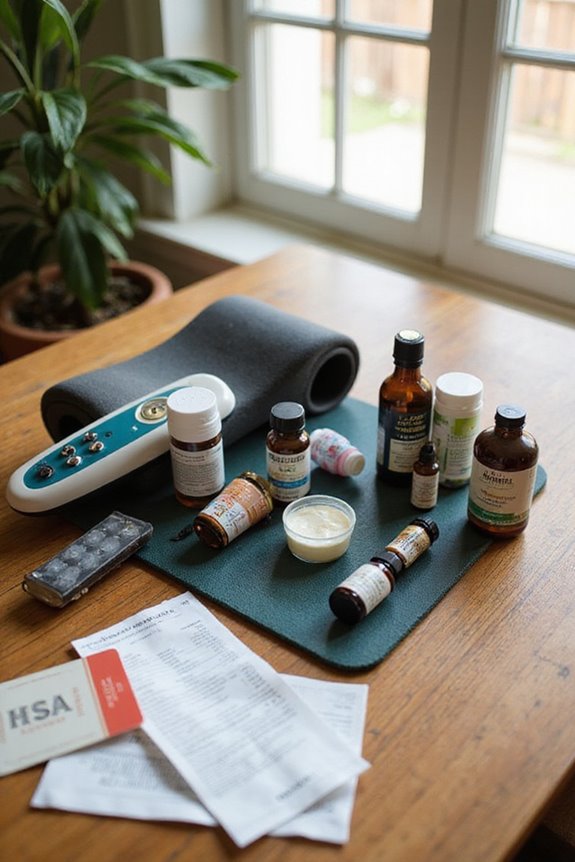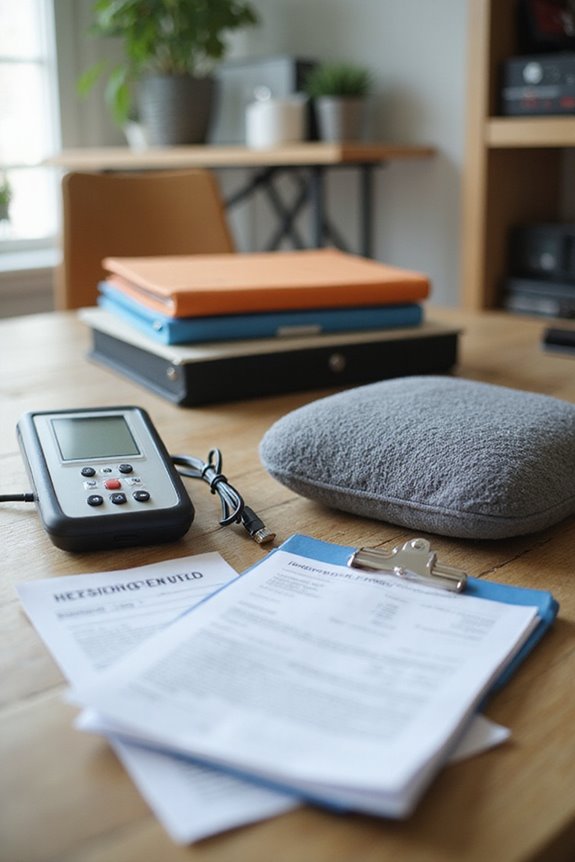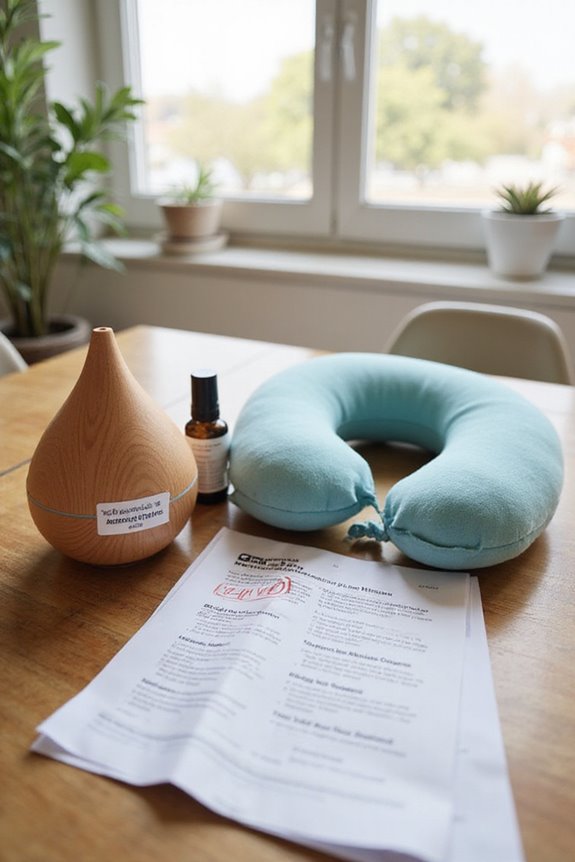Health Savings Accounts (HSAs) can cover specific pain relief equipment that is FDA-approved or medically necessary. Eligible items include electrotherapy devices, topical medication delivery systems, and cold therapy packs. However, documentation such as a Letter of Medical Necessity from a healthcare provider is vital. Non-eligible items typically include massagers and general wellness products. Compliance with administrative guidelines is important to guarantee reimbursement. Further details on specific items and eligibility criteria can be explored.
Key Takeaways
- Health Savings Accounts (HSAs) can cover pain relief equipment if it is FDA-approved or deemed medically necessary by a healthcare provider.
- Documentation such as a Letter of Medical Necessity enhances the eligibility of pain relief devices for HSA reimbursement.
- Eligible pain relief items include electrotherapy devices, heat and cold therapy packs, and assistive equipment like prescribed braces.
- Non-medical comfort items, like general massagers, and over-the-counter pain relievers are typically not covered by HSAs.
- Verification with HSA administrators is essential, as eligibility may vary by individual plans and specific circumstances.
Understanding HSA Eligibility for Pain Relief Equipment
Understanding HSA eligibility for pain relief equipment requires careful consideration of specific criteria established by the Internal Revenue Service (IRS) and individual HSA providers. To qualify for HSA benefits, pain relief devices must primarily serve medical care or treatment of a specific condition.
Key criteria include:
- Equipment must be FDA-approved or deemed medically necessary.
- A healthcare provider’s documentation may enhance eligibility.
- Devices promoting general health or comfort without a diagnosis are typically ineligible.
Accepted items include electrotherapy devices, acupressure mats, and certain recovery tools. Eligible purchases can be made online or in-store, requiring clear medical use documentation for reimbursement. Consistent verification with HSA administrators is essential, ensuring compliance with varying eligibility standards across providers. Additionally, many TENS unit pads are designed with high-quality adhesive that ensures effective pain relief and may qualify for HSA coverage.
Qualified Medical Expenses Covered by HSAs

Qualified medical expenses (QMEs) encompass a wide range of health-related costs that qualify for reimbursement through Health Savings Accounts (HSAs). According to IRS guidelines, eligible expenses include:
- Doctor visits, hospital services, and necessary prescriptions.
- Durable medical equipment (DME) such as wheelchairs and TENS units prescribed for pain management strategies that can provide effective relief during labor.
- Diagnostic tests and supplies like blood pressure monitors and diabetic test strips.
- Acupuncture and physical therapy when used for treatment.
HSA tax implications are significant, as reimbursements for QMEs incurred after account establishment are tax-free. The account holder must verify that expenses meet IRS definitions. Understanding these criteria guarantees that individuals make informed decisions regarding their health-related expenditures while maximizing their HSAs’ benefits.
Types of Pain Relief Equipment Eligible for Reimbursement

Pain relief equipment encompasses a variety of devices and products eligible for reimbursement through Health Savings Accounts (HSAs).
Eligible Pain Relief Devices:
- Topical medication delivery devices, such as transdermal patches and medicated gels.
- Electrotherapy devices, including TENS units and muscle relief equipment.
- Heat and cold therapy packs, contingent on appropriate medical documentation.
- Acupressure mats and wristbands aimed at pain relief.
Assistive Equipment:
- Wheelchairs and mobility aids that alleviate pain from mobility impairments.
- Physical therapy devices and prescribed braces for joint or muscle pain.
Over-the-Counter Products:
– Topical analgesics, eye drops for pain relief, and certain OTC medications with prescription.
Understanding the reimbursement process is essential for accessing these benefits efficiently. Additionally, devices like TENS units are known for their effectiveness in providing drug-free pain relief and muscle recovery.
Documentation Requirements for Pain Relief Equipment

Documentation requirements play a pivotal role in securing reimbursement for pain relief equipment through Health Savings Accounts (HSAs). Essential documentation types include:
- Letter of Medical Necessity (LMN): Must be written by a licensed healthcare provider, detailing the medical condition and justifying the equipment’s necessity for treatment, not convenience.
- Receipts: Must display the purchase date, seller information, and itemized costs, maintained for three to seven years for verification.
- Supporting Records: Additional documentation, such as prescriptions or clinical notes, can strengthen claims regarding the medical necessity of the equipment.
It is vital to adhere to both IRS regulations and any additional requirements set by HSA administrators, ensuring all documentation is accurate and thorough for potential audits.
Limitations and Non-Eligible Pain Relief Items

Understanding the limitations and exclusions surrounding pain relief items within Health Savings Accounts (HSAs) is essential for managing healthcare expenses effectively.
Pain Relief Exclusions
- Over-the-counter (OTC) pain relief drugs like acetaminophen and ibuprofen are generally eligible, but certain topical products may require a prescription.
- Items not primarily intended for medical use, such as wellness products or herbal supplements, typically do not qualify.
- Devices used solely for comfort, like massagers or ergonomic chairs, are also excluded unless prescribed.
HSA Guidelines
- Eligibility varies by individual HSA plan, often requiring documentation for complex devices.
- Items lacking FDA approval or deemed cosmetic are frequently ineligible.
- HSA administrators retain discretion over borderline cases, affecting reimbursement decisions. Additionally, certain therapeutic devices, such as heating pads for back pain, may qualify if prescribed by a healthcare provider.
Frequently Asked Questions
Can I Use My HSA for Alternative Pain Relief Therapies?
Health Savings Accounts can be utilized for alternative therapies, as certain items may qualify as eligible expenses. Individuals should verify their specific plan details to ascertain coverage for these innovative pain relief solutions.
Are There Any Limits on How Much I Can Spend on Pain Relief Equipment?
In a world where knights sought healing potions, spending limits under HSA regulations dictate that expenditures on pain relief equipment must align with individual account balances, ensuring responsible management of available funds for medical necessities.
Can I Purchase Pain Relief Items Online Using My HSA?
Online purchases can be made with HSA eligibility, provided the items qualify as medical expenses. Receipts must detail the product and its medical purpose, ensuring compliance for reimbursement from Health Savings Accounts.
What Happens if I Misuse My HSA Funds for Non-Eligible Items?
Misusing HSA funds for non-eligible items incurs significant HSA penalties and financial consequences, including income tax and potential 20% penalties. Awareness of these repercussions fosters responsible usage, ensuring individuals maximize their health savings potential.
Can I Refund My HSA for Pain Relief Items Purchased in the Past?
Steering through the HSA refund process can feel like traversing a labyrinth. However, if items fall on the eligible items list, past purchases may indeed be reimbursed, rewarding diligent record-keepers with financial relief and belonging to a savvy community.





